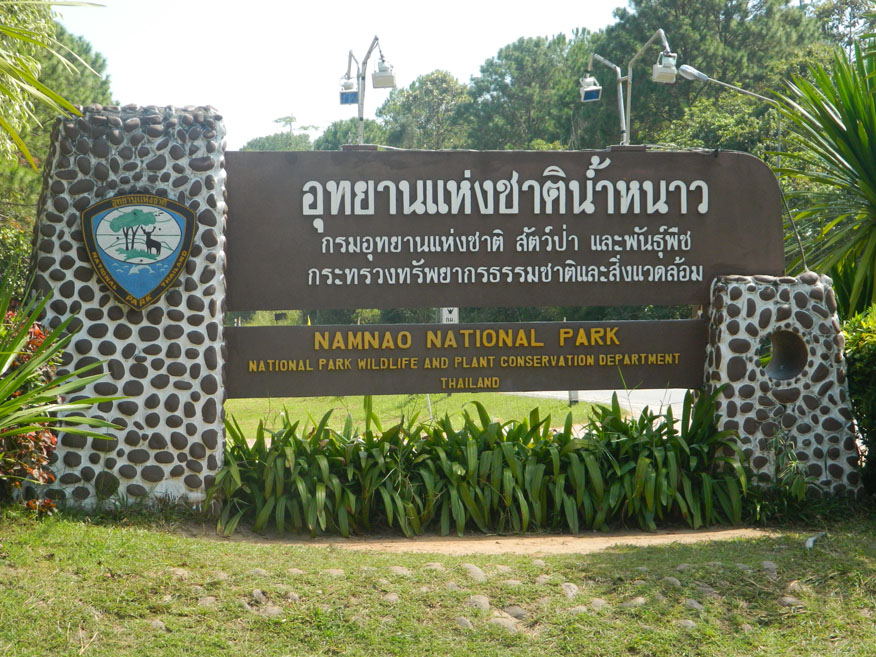Natural Thailand Tour - 17 November to 3 December 2014
Nam Nao National Park

|
Name: Nam Nao National Park
Location: Western Phetchabun Province
Status: National Park (1972)
Area: 966 km2
Photo dated: 22nd November 2014
Nam Nao National Park covers an area within Amphur Mueang Lom Sak and Lom Kow in Phetchabun provice and Amphur Kornsan within Chaiyaphum province. The park Headquarters is in an unusual and fascinating landscape: deciduous forest dominated by tall pine trees. The area is mountainous and its forests provide an important watershed for the surrounding districts. The Park covers in total an area of about 966 square Kilometres. The park received its national status on the 4th May 1972.
Nam Nao National Park lies on the border between northeastern and northern Thailand, part of the Phetchabun mountainous range with its tallest maintain, Phu Phajit. The topography comprises evergreen forests and streams. Within the watershed a number of important rivers rise, especially the Pa Sak River which eventually joins the Chao Praya River. Others are The Pong and Loei rivers and Khon Kaen and Nam Churn streams. All these flow into the Ubonrat Dam.
The mountains and forests create a cooler climate in the Park, particularly during the night and early morning. The daytime temperatures are very pleasant with an average annual temperature of 25 degree Celsius. Rainy season is between July and October. Cold season can be very cold, sometimes even with a frost and temperatures as low as 0 degree Celsius. The coldest month being November.
The forest of Nam Nao contains many different forest types, including dipterocarp, deciduous, evergreen, hill evergreen and pine forest. In the past the forest has provided a lucrative source of timber while there are also many medicinal plants and orchids within the area.
The forest provides a habitat for animals including; tigers, leopard, asiatic black bear, malaysian sun bear, fox, porcupine, wild pig, guar, mouse deer, rabbits and not least forest elephants. There are over 200 species of birds in the park including parrots, hornbills, warblers, babblers and siamese firebacks and some 340 or so butterfly species.
|

